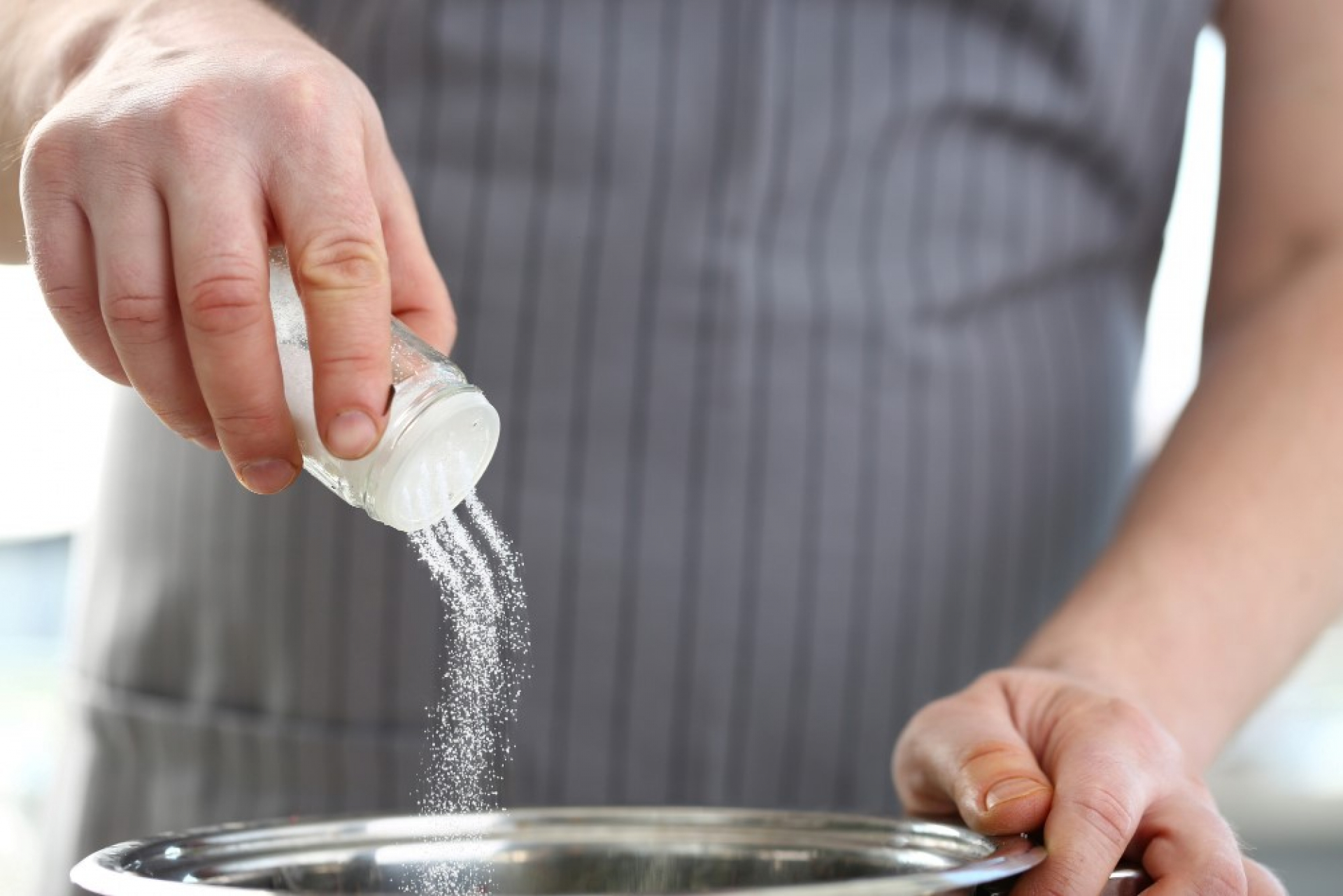Managing high blood pressure isn’t just about medication, it starts in the kitchen. A well-structured low-sodium diet plays a vital role in keeping your blood pressure in check. For those living with hypertension or aiming to prevent it, following a culturally familiar yet heart-friendly meal plan can be both effective and enjoyable.
This 7-day Blood Pressure Diet plan is specially crafted using Indian cuisine to help reduce salt intake while keeping the meals flavorful and balanced. We will also guide you through sodium monitoring, explain how a Sodium Blood Test can support your health goals, and provide practical hypertension diet tips you can follow for life.
Why Sodium Matters- The Salt–Blood Pressure Connection
Excess sodium causes the body to retain water, which increases the volume of blood in your vessels. This added pressure can strain your heart, damage arteries, and eventually lead to heart failure, stroke, or kidney disease.
A typical Indian diet can be high in sodium due to ingredients like pickles, papads, packaged snacks, namkeens, and restaurant food. That is why a low-sodium diet is essential, especially for those with hypertension or abnormal Sodium Blood Test results.
What Is a Sodium Blood Test?
A Sodium Blood Test measures the level of sodium in your bloodstream. It helps evaluate:
- Electrolyte balance
- Kidney function
- Dehydration or fluid retention
- Risks associated with high or low sodium levels
Doctors may recommend it if you have uncontrolled blood pressure, take diuretics, or follow a strict blood pressure diet. It is a crucial part of sodium monitoring for patients at cardiovascular risk.
Low-Sodium Diet Guidelines for Indians
Before diving into the meal plan, here are some essential hypertension diet tips to make your meals low in sodium yet high in flavor:
- Avoid packaged foods: Say no to chips, processed snacks, instant noodles, and frozen foods.
- Skip the pickles and papads: They are often loaded with salt and preservatives.
- Rinse canned items: If using canned beans or veggies, rinse them to wash away excess sodium.
- Cook from scratch: Homemade meals give you control over your salt intake.
- Flavor creatively: Use herbs, garlic, lemon, ginger, mustard seeds, and pepper for taste instead of salt.
- Watch for hidden salt: Bakery bread, sauces, ketchup, and chutneys may contain more sodium than you think.
Recommended sodium intake: Less than 2,300 mg per day (ideal: 1,500 mg/day for individuals with high blood pressure). That is just about 1 teaspoon of salt in total, including cooking and table salt.
7-Day Low-Sodium Indian Meal Plan
This low-sodium diet plan is vegetarian, heart-friendly, and easy to follow. Each day balances nutrients and taste while staying under recommended sodium limits.
Day 1
Morning Drink: Warm water with lemon
Breakfast: Oats upma with mixed vegetables + herbal tea
Mid-Morning: Apple slices with a dash of cinnamon
Lunch: Brown rice + arhar dal (no salt) + stir-fried bhindi (ladyfinger) with minimal oil and spices
Evening Snack: Roasted unsalted makhana
Dinner: Phulka (no salt) + lauki-tomato curry + cucumber salad
Sodium Monitoring Tip: Measure salt in cooking using measuring spoons, not by approximation.
Day 2
Morning Drink: Jeera (cumin) water
Breakfast: Moong dal chilla with coriander chutney (no salt)
Mid-Morning: Buttermilk with mint (unsalted)
Lunch: Quinoa + spinach dal + steamed beans-carrot stir-fry
Evening Snack: Sprouted moong bhel with lemon, onion, and coriander
Dinner: Multigrain roti + pumpkin curry + mixed vegetable soup
Hypertension Diet Tip: Add lemon juice at the end of cooking to enhance flavor without salt.
Day 3
Morning Drink: Tulsi (holy basil) tea
Breakfast: Vegetable poha (minimal salt) + unsalted peanuts
Mid-Morning: Papaya slices
Lunch: Millet khichdi with bottle gourd + carrot-beet salad
Evening Snack: Amla juice + roasted chana
Dinner: Bajra roti + palak tofu + tomato cucumber salad
Blood Pressure Accuracy Hack: Track your daily water intake to avoid dehydration-induced blood pressure spikes.
Day 4
Morning Drink: Fenugreek (methi) soaked water
Breakfast: Besan (gram flour) toast on whole wheat bread (no salt in batter)
Mid-Morning: Watermelon cubes
Lunch: Red rice + tur dal + sautéed cabbage with turmeric and mustard seeds
Evening Snack: Low-salt hummus with cucumber sticks
Dinner: Ragi roti + mixed vegetable curry + boiled corn salad
Sodium Monitoring Tip: Check nutrition labels for hidden salt in "health" snacks and biscuits.
Day 5
Morning Drink: Warm water with tulsi leaves
Breakfast: Idli made from brown rice + coconut chutney (salt-free)
Mid-Morning: Coconut water
Lunch: Moong dal khichdi with spinach + pumpkin sabzi
Evening Snack: Fruit salad with chia seeds
Dinner: Soft phulka + ridge gourd curry + curd (plain, unsalted)
Hypertension Diet Tip: Fermented foods like curd support gut health, which can aid in BP regulation.
Day 6
Morning Drink: Ginger-lemon detox water
Breakfast: Rava upma with vegetables (no salt; add lemon and coriander)
Mid-Morning: Unsalted almonds (4–5 pcs)
Lunch: Barley pulao with methi leaves + raw papaya sabzi
Evening Snack: Bajra or jowar dhokla (salt-free) + mint tea
Dinner: Whole wheat chapati + turnip curry + shredded carrot salad
Sodium Monitoring Tip: Prefer fresh ingredients over canned or preserved foods.
Day 7
Morning Drink: Green tea with cinnamon
Breakfast: Dalia (broken wheat porridge) with vegetables
Mid-Morning: Guava
Lunch: Brown rice + methi dal + sautéed carrots and green peas
Evening Snack: Unsalted popcorn or puffed rice with spices
Dinner: Methi paratha (no salt) + curd + grated beet salad
BP Control Tip: Avoid table salt, train your palate to enjoy natural flavors.
How a Sodium Blood Test Supports Your Diet Plan
Even with a perfect low-sodium diet, some people retain sodium due to genetic, hormonal, or kidney-related factors. That is why a Sodium Blood Test is useful, it offers insights into how well your body is processing sodium and whether further adjustments are needed.
When to get tested:
- If your blood pressure remains high despite diet changes
- If you are on diuretics or have chronic kidney disease
- If you feel bloated, dizzy, or excessively thirsty
A doctor may adjust your treatment or recommend enhanced sodium monitoring based on your test results.
Tools and Habits for Better Sodium Monitoring
Incorporate these habits to make your blood pressure diet more effective:
- Use Himalayan pink salt or rock salt cautiously, they still contain sodium.
- Maintain a food diary with daily salt usage.
- Install a sodium tracker app to monitor intake.
- Measure BP at home using a reliable BP monitor.
- Discuss Sodium Blood Test results during your follow-ups.
These lifestyle tweaks ensure your self-monitoring is not just data collection, but a path to real improvement.
Flavor Boosters That Replace Salt
If you are missing salt, try these alternatives:
- Lemon juice for brightness
- Roasted cumin powder for depth
- Coriander, ginger, garlic, green chilies for pungency
- Fresh herbs like mint, tulsi, curry leaves
- Dry mango (amchur) or tamarind for tanginess
These ingredients enrich your meals without compromising your low-sodium diet.
Grocery Checklist for Low-Sodium Indian Kitchen
· Whole grains (millets, brown rice, quinoa)
· Lentils and pulses
· Fresh fruits and vegetables
· Low-fat dairy
· Cold-pressed oils (mustard, olive)
· Spices and herbs (turmeric, cumin, coriander, garlic, ginger)
· Unsalted nuts and seeds
· Lemon, amla, and tamarind
Avoid: Processed pickles, papads, cheese, bakery goods, instant noodles, ready-to-eat meals
Your Plate Is Your Power
Switching to a low-sodium diet doesn’t mean sacrificing taste, it means making mindful swaps, cooking smarter, and building habits that support your heart. Paired with regular sodium monitoring, a good blood pressure diet can prevent complications, reduce medication dependency, and boost your overall well-being.
Start small: cut down the salt, try this one-week plan, and get a Sodium Blood Test to guide your journey. With consistency and creativity, your food can become your most powerful medicine.


